In the complex world of international power distribution, harmonizing the diverse electrical standards is a significant challenge across industries more than ever before. One of the most obvious barriers arises frequently due to differences in frequency, specifically when converting power between 60Hz and 50Hz systems. This is even more of an issue for multinational corporations, where equipment designed for a specific frequency needs to function normally in a system of a different frequency. This article looks deeply into the field of frequency drop of 60 to 50Hz modulation, this is in relation to power supply, compatibility of voltage, and how different appliances perform with it. In this article, you will delve into how these devices malfunction, how they operate, and highlight their applications, specifically from manufacturing to transportation. If you are an electrical engineer, a maintenance worker, or a project manager aiming to synchronize all equipment across regions, the following information will present the basic principles. Now let’s move on and look at the various techno-commercial processes, issues, and remedies in the context of systems where such alterations are relevant.
Introduction of Frequency Converters
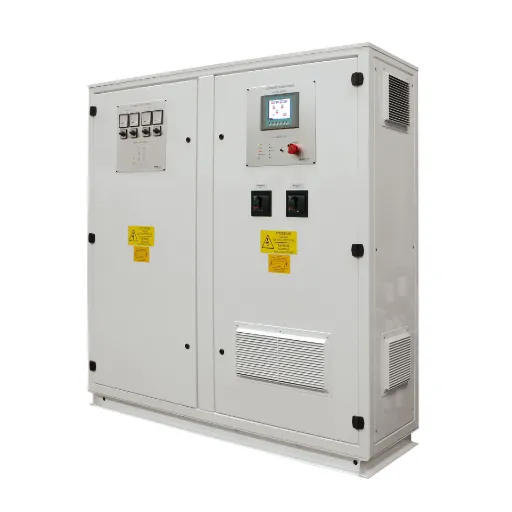
Frequency converters are designed to adjust the frequency of an electrical power output to match the requirements of existing equipment or a system. This is most often sought for device system-level applications, where the incoming power from the utility grid is at a different frequency than that used for the operation of the machines or devices. With today’s component performance, it is quite simple to construct these frequency converters. In other words, these systems convert a particular frequency into another one for an existing equipment or system, and that is active conversion. This further ensures that equipment and supplies are used and maintained correctly. Across the globe, there are power supply standards that countries adhere to, which is why Frequency converters are essential in these industries. Thus, one may find that European countries use 50Hz power transmission, while in America, 60Hz is used. They also aid in resource-conscious engineering, preservation of equipment, and smooth operation of cross-country systems.
What is a Frequency Converter?
The task of a frequency changer is to modify the power frequency through power conversion to achieve the desired frequency for specific devices or equipment. For most applications, three critical steps, including rectification, modulation, and inversion, are executed. The bulk power originates from the first page, where an alternating current is generated, which is then converted to direct current; this process is referred to as rectification. Close to controlling the inverter comes the modification and modulation of the direct current. Lastly, when the inverter is used, the direct current of up to the rated voltage is converted back to alternating current at the desired frequency.
Today, an increase in output frequencies is achieved with the aid of insulated-gate bipolar transistors (IGBTs), which are widely used in modern electronic control systems. Moreover, such devices feature advanced control algorithms and digital interfacing, which enable lower energy consumption under variable load conditions and facilitate easy interfacing with automatic control equipment.
Types of Frequency Converters
| Type | Key Points/Parameters |
|---|---|
| Mechanical Frequency Converters | Utilize gears or belts for speed adjustment. |
| Static Frequency Converters | Solid-state devices with no moving parts. |
| Rotary Frequency Converters | Combine motor generators for precise control. |
| Hybrid Frequency Converters | Blend of rotary and solid-state technologies. |
| AC to DC Converters | Convert alternating current to direct current. |
| DC to AC Converters | Convert direct current to alternating current. |
| Multi-level Converters | Use multiple voltage levels for better efficiency. |
| Matrix Converters | Directly convert AC power without rectification. |
| Voltage Source Converters (VSC) | Utilize capacitors for voltage regulation. |
| Current Source Converters (CSC) | Utilize inductors for current regulation. |
Importance of Frequency Conversion
In modern power systems and industrial applications, the issue of adjusting the current frequency, which is extremely important, is being actively addressed by scheduling the adjustment of electrical power according to specific technical requirements. It is necessary to link suitable frequency devices that operate at a distance from each other. One such example is the case of connecting 50 Hz and 60 Hz equipment, especially when such equipment belongs to the same company.
To enhance energy efficiency, it is crucial to utilize advanced technologies for frequency conversion, as they help minimize electricity loss in large-scale power systems. Take, for example, variable frequency drives (VFDs), which are popular for controlling the speeds of motors in such a way that the motors perform at the required level of activity but still consume minimal energy, even in some applications such as heating, ventilation, and air conditioning systems, industrial manufacturing processes, and renewable energy systems. Moreover, in applications demanding power grid stabilization, aerospace and high-speed railway systems, there is a need to maintain a unidirectional and stable operation. The usefulness of advanced conversion technologies cannot be overstated in the quest for efficient power utilization.
Technical Aspect of 60Hz to 50Hz Conversion
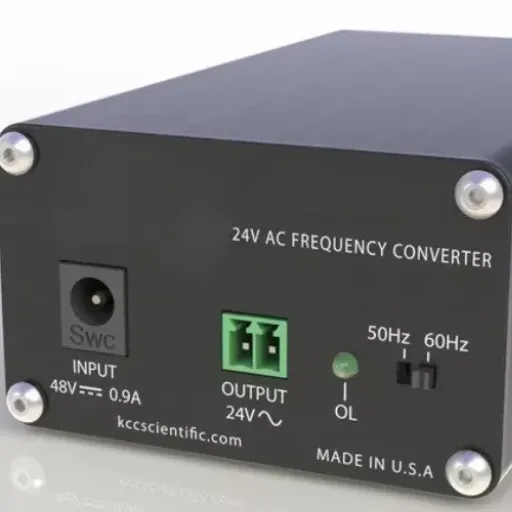
The transition from 60Hz to 50Hz involves restoring both norms in terms of frequency and voltage values, due to the industrial equipment’s efficiency and reliability. Machines designed to operate on a 60Hz system, such as motors and transformers, may experience performance degradation or even overheating, reduced torque, or efficiency when exposed to 50Hz without any adjustments.
Key Conversion Considerations:
- Frequency Converters: The ideal approach to converting 60Hz to 50Hz involves the deployment of frequency converters. These facilities alter the input supply in such a way that ensures proper machine operation.
- Motor Adjustments: If the appliance has an electric motor, it should be rated for 50Hz. Motors designed to operate at a fixed frequency are therefore rated for a single frequency; hence, using such motors in an application with a reduced frequency would require some modification or an increase in the rating.
- Voltage Compatibility: Insulation is desirable, as most voltage levels vary. In contrast, 60Hz or 50Hz power-based regions (for example, 110V and 220V) should provide users with all the necessary components for electrical equipment. It is necessary that the voltages and frequencies in the supplied equipment comply with the guidelines of the mother brand. The voltage differences should be minimized as much as possible, and other controlled appliances should be placed as far away as possible. Additionally, frequency control should be implemented for those appliances and devices to minimize bias.
- Harmonics and Efficiency: Not all conversions cause complete losses of energy; sometimes, they even introduce energy losses, which can be described as Harmonic distortion. The use of high-devices such as Sine Wave Reactive Isolation Transformers drastically reduces these levels and is needed to preserve equipment functionality.
Fixed vs Variable Frequency Conversion
| Parameter | Fixed Frequency Conversion | Variable Frequency Conversion |
|---|---|---|
| Definition | Conversion maintains a constant frequency. | Conversion adjusts frequency dynamically. |
| Application | Used in systems with steady load demands. | Ideal for systems with variable loads. |
| Energy Efficiency | Lower efficiency in dynamic environments. | Higher efficiency with changing loads. |
| Control Complexity | Simple control mechanisms. | Advanced control algorithms required. |
| Cost | Typically lower initial cost. | Higher initial investment required. |
| Equipment Wear | Higher due to constant speed operations. | Reduced wear due to precise adjustments. |
| Power Consumption | Fixed consumption regardless of demand. | Adjusts power usage based on demand. |
| Common Use Cases | Pumps, conveyor belts, traditional motors. | HVAC systems, modern industrial machinery. |
| Integration Flexibility | Limited adaptability to other systems. | Highly adaptable to system variations. |
| Maintenance | Lower maintenance requirements. | Higher due to advanced technology. |
Understanding AC Voltage and Power Supply
Today’s electrical infrastructure is inseparable from the alternating current (AC) voltage and power supply systems, which facilitate the easy transportation of energy over long distances. The flow of energy through an alternating voltage is reversible on a periodic basis. In this way, it is more efficient in reducing loss, as there is no need to convert energy, unlike in the case of Direct Current (DC) systems. Depending on the area of implementation, the regularity of an alternating current frequency varies; for example, 50 Hz is prevalent in Europe and most parts of Asia, while the American standard practice is 60 Hz.
The process of transforming AC involves altering high or low voltage levels using transformers to strike an optimum balance between safety and efficiency. The aspect of efficiency, in particular, spurs the growth of AC systems in the power generation and distribution sectors. The high voltage is transmitted over long distances to reduce energy wastage and to bring the voltage to a safe level, it is distributed at low voltages for household and industrial purposes. The shape of AC voltage is crucial for those who use it to power different electrical appliances without encountering problems with motors and generators. The latter goods could turn out to be explosives that will damage any operational system of the device. This conformity in terms of the level of the utility distribution is what makes it the cheapest when it is market-deployed.
Applications of 50Hz Frequency Converters
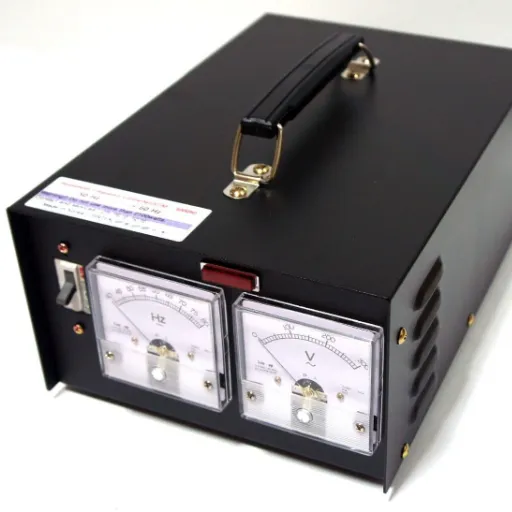
A 50Hz Frequency Inverter is a device often used in applications that require strict accuracy in controlling the operations of electrical appliances designed to run at a particular frequency. Some of the major applications of these converters will include:
Industrial Manufacturing
These frequency converters simplify the use of tools or equipment designed to run on a 50Hz power supply in areas with different grid standards, thereby maintaining production efficiency levels.
Testing Equipment
It is possible to convert the connection made to electrical devices for 50Hz power conditioning during testing and validation of such devices before deploying them in other markets.
Aviation and Marine Systems
In cases where equipment has 50Hz power requirements, frequency converters are necessary for the equipment to function efficiently across different locations or within an international fleet.
Renewable Energy Integration
They are used to adjust frequencies and incorporate renewable energy into the existing 50 Hz grid, aiming to improve grid stability.
Therefore, 50Hz frequency converters have great relevance in industries that are highly globalized and require the integration of different power levels that vary significantly from one region to another.
Industries Utilizing 50Hz to 60Hz Converters
A 50-Hz inverter of semantics in the form of a 60 Hz on is used for power conversion in various sectors with international operations that require the power to adapt to different regional electricity conditions.
- Aerospace and Defense: The primary application is in aerospace and defense, where aircraft or military system frequency converters are used for the proper testing of equipment and configurations, or for shifting available power to other mission-oriented power buses during international deployments or operations.
- Maritime and Shipping: Maritime transportation is the second one mentioned, as when handling goods, every commodity is located on a vessel, which is employed to ship goods directly from one point or location to another. The transportation is across some areas and there are obvious variations in electrical power systems such that the standard 5ohz is not the same. Ships are tailored to the electrical system of the exporting country.
- Healthcare: In arenas like hospitals which has imported facilities such as MRIs, a sensitive power system can be manipulated with the help of a frequency changer module when the frequency of the appliance is different from the native frequency of the area.
- Manufacturing and Production: In industries manufacturing products using imported machinery that includes motors which have been specifically built to run at certain frequencies, fluctuations can be remedied using converters rather than purchasing new equipment which would require factory modifications.
- Renewable Energy: The inadequately created technical regulations indicate an absence of economic measures for generation of electric power: Integration of renewable energy sources (RES), in particular, wind energy or solar technology, into electricity and energy transmission grids is easier with the help of a 50 Hz – 60 Hz kVA converters especially if transmission of power and grid reliability are also taken into consideration.
These international activities demonstrate the importance of frequency converters in integrating information systems, ensuring the compatibility of equipment and increasing efficiency within industries, as well as promoting occupational safety across various power supply levels.
Benefits of Implementing Frequency Converters
Improved Equipment Longevity
Studies have also demonstrated that the prolonged use of such devices can effectively increase the operating capacity of the motor by over 50%, by limiting peak torque in the start-up stage or sudden changes in operation mode.
Enhanced Energy Efficiency
For instance, frequency converters can help maximize equipment operation speeds, which in turn reduces electrical consumption. A study published by the U.S. Department of Energy has revealed that energy consumption in industries can be reduced by 20-50% by using an appropriate frequency converter, thereby achieving cost-effective purposes and objectives.
Operational Flexibility
With different realized frequency ranges and voltage levels, frequency converters can easily incorporate old machinery, hence the overall maintenance of the smooth functioning of the business without having to acquire new replacement equipment that can be costly.
Global Equipment Compatibility
Power systems must use frequency converters to utilize equipment operating at different frequencies, such as 50Hz and 60Hz. By doing this, the need for a global infrastructure decreases, which, in combination with highly standardized products, also shortens global rollout times.
Reduced Maintenance Costs
Among other benefits, the use of drives results in a reduction of equipment downtime and repair costs, as it minimizes overspeeds and prevents thermal overload. These costs are significantly increased over a certain period, particularly in manufacturing industries where high-performance equipment is used.
Improved Process Control
In such fields as motor-driven devices, the consistency and adequacy of the movements are of particular interest. For any wide-scale process where everything should function at the expected level, experienced lean practitioners recommend building in extras to run in support processes, which helps reduce inventory.
Choosing the Proper Frequency Converters
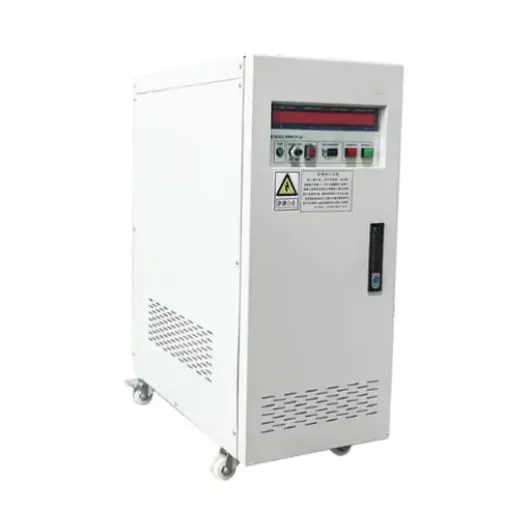
To achieve the maximum advantage, a proper frequency converter must be chosen that meets all non-standard requirements, taking into consideration the required stability and duration of operation. There are key figures that will help in making this evaluation:
Key Selection Factors:
- Power and Voltage Requirements: To avoid inefficiency or damage to your system, ensure that the capacitor’s voltage and power match those of your application or motor’s design.
- Load Type: Verify whether the application involves constant or variable torque characteristics, as this will determine how the controller should be constructed and what it can achieve.
- Control Features: Check for features such as speed and torque control, which are specific to the inverter, or advanced control functions, including the ability to adjust and edit inverter parameters in certain applications.
- Environmental Conditions: Environmental conditions like heat, moisture, dust, or vapors might interfere, as well as some chemicals and their fumes. Ensure that if the converter is to be used under harsh conditions, these requirements are addressed.
- Efficiency and Energy Savings: Choose models that have been designed with improved efficiency, minimising wasted energy, resulting in substantial reductions in energy consumption, which will translate into saved money over the years.
- Compliance and Certifications: Also verify that the specifications and ratings on the inverter meet the established requirements for safety and efficiency, and are in line with, or exceed, the relevant standards.
It is best to look at each of the factors separately, and this way, it becomes easy to determine to all users the frequency converter that will work effectively for them.
Input Voltage and Power Requirements
Steps vital to the selection of a frequency converter include examining the required input voltage, power, and operating time compatibility with the electrical system of the ton per branch unit. Frequency Converters are designed explicitly for particular voltage levels, and the major categories include low, medium, and high voltage. A range of voltages is typically supplied for low voltage applications, which frequently constitutes 200-240V or 380-480V, while moderate to high-voltage converters possess by far greater spectrums to meet the requirements of industrial facilities.
The total load on a converter is usually expressed in kilowatt (KW) or horsepower (HP) and should be according to the converter capacity to avoid inefficiencies or overloads. Furthermore, an incoming user must take into account the power distribution of the system, specifically whether it is single-phase or three-phase inpu,t which affects performance and system stability. The desirable strategy of load profiling even under conditions of either static or dynamic loads permits optimizing the equipment selection and preventing energy wastage. Normalizing the system’s operating voltage according to the frequency converter’s load requirements not only enhances the system’s reliability but also extends the lifetime of the frequency converter and its connected equipment.
Understanding Sine Wave and Pure Sine Wave Output
The phrase “sine wave output” means an evenly spaced and periodic motion of voltage, which most of the alternating current (AC) systems are built on. In more detail, the production of a clean waveform that practically resembles the sine wave usually produced by the utility companies is the one that many people refer to as a pure sine wave inverter. It becomes pointless when providing electricity to high-end sensitive electronics, as any departure from the pure sine wave inverter or distortion causes harmonic noise, overheating, and can even cause damage.
Typically, rather than other forms of inverters, Pure Sine Wave Inverters are primarily considered and used in applications where the inverter is employed for more precise purposes, such as motor-driven equipment or modern, sophisticated electronic devices. They see to it that a lot of equipment in existence, such as medical instruments, audio equipment, and household appliances with AC motors, works effectively and there is no fear of damage. The availability of pure sine wave technologies is further advanced by continuous developments in the field, which reduce total harmonic distortion almost to zero, providing clean power sine waves across various sectors.
It is necessary to deploy pure sine wave systems when dealing with loads that change, because these make the best use of power and meet the strict electrical requirements. This not only helps reduce electrical noise and improve energy efficiency but also enhances the equipment’s durability. Such characteristics further enhance the usefulness of the systems in both the domestic and industrial sectors. For such environments, it is crucial to know how to use the available engineering tools and instruments.
Summary of Key Point
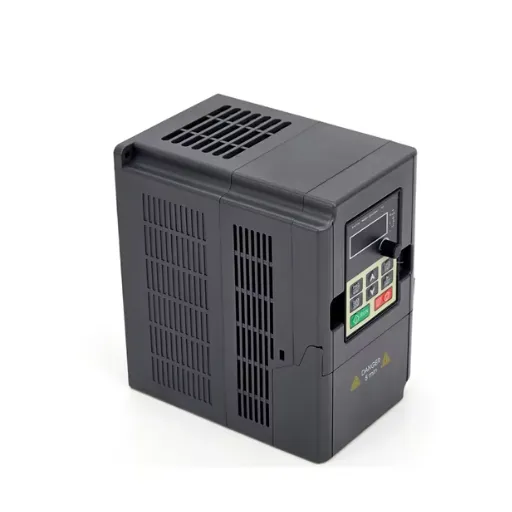
- Designed with the progressive variance component, these systems ensure maximum energy efficiency while maintaining compliance with electrical standards and established laws of electrical science.
- These systems have been carefully designed to minimize electrical disturbances, which primarily ensure the optimal rate of product production, thereby conserving energy— a pressing issue in modern society.
- Some of the applications that utilize these systems improve efficiency in that, at a given energy level, the best objects and structures are selected to occupy this energy with minimal losses, allowing for the recycling of some parts, while others can’t.
- The introduction of the mentioned systems facilitates the precise improvement of every detail within the context of each system, which is quite complex.
Future Trends in Frequency Conversion Technology
Currently, new developments in frequency conversion are gradually shifting towards greater performance and intelligence contributions. The tendency involves working with wide-bandgap semiconductors, such as silicon carbide (SiC) and gallium nitride (GaN), which enable higher frequencies of operation with reduced thermal losses, resulting in greater efficiency. Furthermore, the application of modern devices with the ability to optimize and predict failures in consecutive conversion stages enables us to ensure systems operate under optimal conditions with minimal losses.
One more vital transformation worth considering is converting some high-frequency equipment to that which can effectively support renewable energy sources. Modern-day converters are evolving from supporting fixed, dedicated PV or wind turbines to being able to supply non-stop and grid-tie power, displacing other converters and associated equipment. At the same time, the development of Industry 4.0 made it possible to create IoT (Internet of Things)-based frequency converters with the capacity of remote monitoring, diagnostics, and control through the use of cloud-based systems.
These advancements reflect the industry’s shift towards digitalized and sustainable solutions, which are also consistent with one of the significant global challenges, such as energy efficiency and increasingly stricter environmental requirements. The field will undergo considerable transformation eventually, as more materials are developed, with an increasing proportion of them being smart materials controlled by intelligent systems.
Final Thoughts on Selecting the Right Converter
The correct choice of a frequency converter requires a thorough assessment of several technical and operational aspects to achieve the best quality of work and longevity. This encompasses factors such as power factor, type of load (or rather the type of load they have, as every factor is considered), efficiency, and the deviation in characteristics of reliability across different modes of operation. Contemporary converters are multi-functional instruments that can be used with variable speed drives, operated at constant speed, and feature self-test functions as well as energy-saving facilities. These features successfully improve the system’s efficiency and, consequently, reduce costs.
Charted growth in a sector is very good. It allows you to understand how the system is supposed to work, quickly track trends in an industry, isolate cases, and analyze system responses. Scenarios and case study reviews offer unique opportunities to understand the daily activities of an organization under observation. For instance, if the transformers also have IoT-enabled benefits, such as monitoring when it is time for the next preventive maintenance service, which ensures the transformer’s reliability. It is an instance of the information for fewer measures of maintenance time when the power equipment is in use. Additionally, any measures that reduce stator winding losses in transformers are advantageous, as they increase the effective usage of machines while also reducing capital expenditure. Moreover, recent developments in the cooling of power equipment and power plant design enable the beneficial use of engineering, rather than merely completing the design before procuring cooling technologies.
In the end, for once, developments should be in line with the requirements of a concrete use, the available legal framework and the sustainable development strategy of the enterprise. It is essential to conduct thorough research and obtain detailed technical substantiation before making any decisions, such as purchasing specific equipment, so that each investment serves its purpose and facilitates the achievement of the intended results.
Reference Sources
1. Electrical Power System Harmonics Analysis Using ETAP
- Key Findings:
- The study used ETAP software to model a 9-bus power system and analyze harmonic distortions when converting from 60Hz to 50Hz.
- Harmonic load flow analysis revealed that certain harmonic models (e.g., IEEE 6-pulse) caused significant distortion, while others (e.g., IEEE 12-pulse) minimized it.
2. Altering Supply Frequency to Prevent the Theft of Electric Power at Distribution End
- Key Findings:
- Proposed a novel method to prevent electricity theft by altering supply frequency at the distribution end.
- Legal consumers received standard 50Hz or 60Hz power, while illegal consumers were subjected to altered frequencies (e.g., 8-10Hz), damaging their appliances.
Frequently Asked Questions (FAQs)
Q: How does a frequency converter work?
A: A frequency converter works by changing the input voltage and converting the frequency to the desired output frequency. To illustrate this concept, a 60hz to 50hz frequency converter will usually convert to DC the AC input, and subsequently change the DC back to AC with an inverter, at the desired frequency. This is necessary in instances where the supply frequency is not suitable relative to the equipment being used. Further adjustments include voltage modification operations facilitated by a transformer offered by some converters, which aim to ensure that the output voltage matches the requirements of the appliances in use. This transformation can also achieve different levels of effectiveness; therefore, it is crucial to use a high-quality power supply capable of meeting the equipment’s needs.
Q: Can I use a frequency converter with single phase equipment?
A: That’s right, single phase equipment can indeed be used with a frequency converter. Models such as single-phase frequency converters are only for the appliances with single-phase power and other voltage requirements. Such converters can operate with different electrical voltages, such as 120 volts or 230 volts, and can accommodate various frequencies, including 60 hertz and 50 hertz. Nevertheless, none of the selected converters can supply sufficient power to all the pieces of equipment or prevent any abuse of electricity by the equipment. In addition, some converters incorporate features that are important for a well-functioning system, such as solid-state technology.
Q: What is the difference between a transformer and a frequency converter?
A: A transformer and a frequency changer perform different roles in an electrical environment. A transformer changes the voltage of AC power without affecting its frequency. Naturally, it is possible to decrease the voltage from 220 V to 120 V or another value if it involves 60 Hz and not 50 Hz. However, it cannot change the frequency. On the other hand, frequency converters impact both the voltage and frequency, which enables the functioning of equipment that is designed for one frequency to be used on a different frequency. This is relevant for practical reasons and where the load devices are not allowed to be affected by a change in the frequency. Whereas transformers are well known for adjusting voltages locally, power systems often include frequency changers, especially in situations where equipment systems are susceptible to frequency fluctuations and when devices must be operated in different locations.
Q: What is a solid state frequency converter?
A: The individual electrical appliances in households have different power supplies and different power consumption, and their currents and voltages differ based on the load of the home appliance and the type of power supply used by it. That is, the power consumption of the individual in-house electrical devices in question varies due to different aspects. At home, the use of modern lighting or small electric power apparatuses will not create a problem, which would become a main concern for the electrical supply. Conversely, the household power supply, irrespective of energy source and installation, may set a limited power supply on household bulbs or the usage of small electrical appliances. In this study, we concentrated on the current standard requirements.
